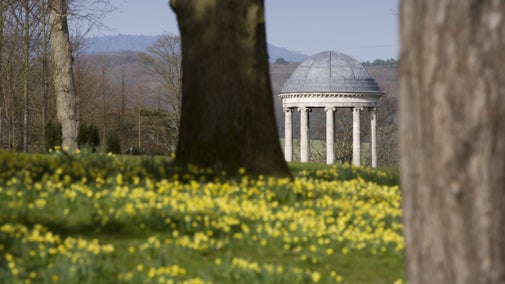1716
Early years
Born in August 1716, Lancelot grew up in Kirkharle near Wallington in Northumberland. In 1732 and at the age of 16, he was taken on as an apprentice on the estate, where his father was the agent.

Lancelot 'Capability' Brown was a grand designer, entrepreneur and salesman who became the UK's most famous landscape designer of the 18th century. His nickname came from his fondness for describing country estates as having great ‘capabilities’ for improvement. By persuading his clients he went on to work on multiple projects at a time.
'Capability’ Brown redesigned hundreds of parks and gardens throughout Britain and developed the natural-looking English landscape style that became renowned throughout the world.
His style came from the three practical principles of comfort, economy and elegance. He designed landscapes on an immense scale, which provided a setting for mansions which were surrounded by woodland, parkland dotted with trees and carefully contoured ground. His landscapes also incorporated serpentine shaped lakes and carefully designed architectural features including follies, temples and bridges.
Brown persuaded the rich, famous and aristocratic to invest the equivalent of millions of pounds in creating landscapes which were beautiful, productive and could take a century to mature. He copied nature so cleverly that his work is often mistaken for a natural landscape. His designs ensured the clients landscapes resulted in views worthy of a prized landscape painting.
Today we care for nearly 20 of Brown’s designed landscapes. Many of these are among some of his most significant works, including Stowe in Buckinghamshire, Croome in Worcestershire and Berrington Hall in Herefordshire. These were complex designs encompassing the landscape and architectural features.

1716
Born in August 1716, Lancelot grew up in Kirkharle near Wallington in Northumberland. In 1732 and at the age of 16, he was taken on as an apprentice on the estate, where his father was the agent.
This article contains contributions from Oliver Cox. Oliver is a Knowledge Exchange Fellow in the Humanities Division at the University of Oxford.

Discover some of the social history behind the places we care for and uncover fascinating facts about the people who have lived in them.

A hub for multi-disciplinary research projects and research engagement at the University of Oxford
Find out more about our Trusted Source articles, which were created in partnership with the University of Oxford, and explore topics related to the special places in our care.

Brown designed landscapes that fitted in seamlessly with the surrounding countryside. So how do you spot the designs of one of the greatest gardeners of all time?

Explore estates designed by Lancelot ‘Capability’ Brown, who still defines our view of the British landscape today. Take in serpentine lakes, gothic follies and tree-fringed parkland.

The history of the English landscape garden is infused with political meaning. Learn the history and political stories behind this garden style characterised by structured informality.

Find out more about the picturesque aesthetic style and how it became a fashionable choice for wealthy estates in the 18th century. Discover more about the people who influenced the movement.

Explore the artworks in our collections that capture the beauty of sunrise and sunset. See how artists have used seascapes and sunlight to bring to life peaceful scenes and industrial backdrops alike.

Learn about some of the misleading objects, paintings and architectural features in the historic houses we look after, and discover the truth behind these optical illusions.
